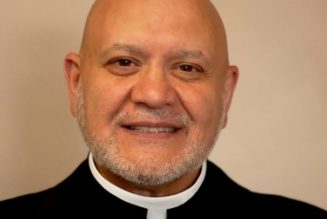
Ahmed is a Pakistani immigrant, a faithful Muslim, and until recently, a financial consultant to Seattle’s high-tech sector. But when he reached me by phone in October 2020, he was just one more frightened father. Days earlier, he and his wife had checked their 16-year-old son into Seattle Children’s Hospital for credible threats of suicide. Now, Ahmed was worried that the white coats who had gently admitted his son to their care would refuse to return him.
“They sent an email to us, you know, ‘you should take your ‘daughter’ to the gender clinic,’” he told me.
At first, Ahmed (I have changed names in this essay to protect the identities of minor children) assumed there had been a mistake. He had dropped off a son, Syed, to the hospital, in a terrible state of distress. Now, the email he received from the mental health experts used a new name for that son and claimed he was Ahmed’s daughter. “They were trying to create a customer for their gender clinic . . . and they seemed to absolutely want to push us in that direction,” he said when I spoke to him again this May, recalling the horror of last October. “We had calls with counselors and therapists in the establishment, telling us how important it is for him to change his gender, because that’s the only way he’s going to be better out of this suicidal depressive state.”
Syed had been a “straight-A student” and—according to his parents and the family’s therapist—quite brilliant. He is also on the autism spectrum, a young man who neglects to make eye contact and must be given rules for how long to shake hands, shower, or brush his teeth. High school was a slog for him, as it often is for kids on the spectrum who find that the social demands of adolescence have risen beyond their capacity to meet them. “He tried to ask a few girls out. It didn’t work out and he got frustrated and angry, and that kind of thing. And so, those girl-boy things get kind of tough for autistic kids, those developmental issues. And that’s where puberty can be very, very hard with the hormones rushing and all this stuff.”
When lockdowns hit, the boy who was already struggling socially and befuddled by questions neurotypical teens take for granted (How do I show a girl I like her? How do I make the other kids include me?) began to spend all day and night on the Internet. “He’s an autistic kid, and so he kind of lost track of time. And he was staying up a lot. So he was staying up, just being on the Internet, Twitter, Tumblr, whatever. . . . And he was in his room, just, you know, sleeping one or two hours a day. And that can really be devastating. He was very confused. He was seeing things, visual hallucinations. And we didn’t know why.”
It is not definitively known why many neurodiverse adolescents identify as transgender, but more than one scientist has pointed out the high rates of coincidence. As several autism experts have explained to me, those on the spectrum tend to fixate, and when a contagious idea is introduced to them—such as the notion that they might be a “girl in a boy’s body”—they are particularly susceptible to it.
As child psychiatrist and expert in gender dysphoria Susan Bradley said to me: “The messages these kids pick up [from trans influencers] when they’re online is, ‘We’re the only people who understand you. Your people, your parents, don’t really understand you.’ And it may be the first time in their lives that anybody has said to them, ‘We understand you. We know you. You’re okay. You’re just like us.’ And it’s powerful.”
I asked Bradley if introducing gender ideology to kids who tend to fixate is like introducing cocaine to those susceptible to addiction. She agreed: “It has the same power to assuage all the alienation and grief and distress that these kids have been struggling with.”
Because of a Covid-19 policy, Ahmed could not stay at the hospital with his son back in October. Syed, in a sleep-deprived and confused state, furious at the parents who had admitted him, and in consultation with hospital staff and a social worker, decided that his problem was gender.
The age at which minors in the State of Washington can receive mental health and gender-affirming care without parental permission is 13. In other words, the emails Ahmed received from the hospital were effectively a courtesy; the hospital did not require Ahmed’s permission to begin his son on a path to medical transition.
But unlike some other parents I would later speak with, Ahmed’s cool head prevailed. Believing he might be walking into a trap, Ahmed reached out to both a lawyer and a psychiatrist friend he trusted. The psychiatrist gave him advice that he believes saved his son, saying, in Ahmed’s words: “You have to be very, very careful, because if you come across as just even a little bit anti-trans or anything, they’re going to call the Child Protective Services on you and take custody of your kid.” The lawyer told Ahmed the same: “What you want to do is agree with them and take your kid home. When the gender counselors advise you to ‘affirm,’ go along with it. Just say ‘Uh-huh, uh-huh, okay, let’s take him home, and we’ll go to the gender clinic.’”
Ahmed assured Seattle Children’s Hospital that he would take his son to a gender clinic and commence his son’s transition. Instead, he collected his son, quit his job, and moved his family of four out of Washington.
Was Ahmed’s reaction extreme? When I first heard it, back in October 2020, I wondered whether he hadn’t overreacted. But as a growing number of parents began contacting me with similar stories, and I delved into the state laws of Washington, Oregon, and California, I came to a different conclusion. Taken individually, no single law in any state completely strips parents’ rights over the care and mental health treatment of their troubled minor teens. But pieced together, laws in California, Oregon, and Washington place troubled minor teens as young as 13 in the driver’s seat when it comes to their own mental health care—including “gender affirming” care—and renders parents powerless to stop them.
Here, for instance, are the powers granted to a 13-year-old child by the state of Washington. Minors age 13 and up are entitled to admit themselves for inpatient and outpatient mental health treatment without parental consent. Health insurers are forbidden from disclosing to the insured parents’ sensitive medical information of minor children—such as that regarding “gender dysphoria [and] gender affirming care.” Minors aged 13 to 18 can withhold mental health records from parents for “sensitive” conditions, which include both “gender dysphoria” and “gender-affirming care.” Insurers in Washington must cover a wide array of “gender-affirming treatments” from tracheal shaves to double mastectomies.
Put these together, and a seventh grader could be entitled to embark on “gender affirming care”—which may include anything from a provider using the child’s name and pronouns to the kid preparing to receive a course of hormones—without her parents’ permission, against her parents’ wishes, covered by her parents’ insurance, and with the parents kept in the dark by insurance companies and medical providers.
Lest you wonder whether there is some madcap elixir polluting the groundwater of Washington State alone, in 2015, Oregon passed a law permitting minors 15 and older to obtain puberty blockers, cross-sex hormones, and surgeries at taxpayers’ expense—all without parental consent. In 2018, California passed a similar bill for all children in foster care, age 12 and up. The California state senate is now considering an amendment to the Confidentiality of Medical Information Act that would bar health insurers from disclosing medical information to parents about their dependents, on pain of criminal liability.
One Washington mother I spoke with, Nicole, has a 16-year-old daughter who struggled with an eating disorder and other mental health problems after being molested by a peer in elementary school. Just before her 13th birthday, the daughter decided she was transgender. “She hated her body, that was truly a real thing,” Nicole told me. “So we wanted to find her help.” But Nicole wasn’t convinced that her daughter had gender dysphoria, since she’d never before shown any signs of discomfort with her biological sex. “She had already been through a whole counseling program with the eating disorder and none of this came up.”
Over the next few years, Nicole’s daughter’s mental health worsened, and she began self-harming. After her daughter attempted suicide in 2019, Nicole took her to the emergency room at Highline Hospital (now St. Anne Hospital) in Burien, Washington. Nicole explained to the social worker at the hospital that, though the daughter was insisting her problem was gender, she’d been beset by a variety of mental health struggles for many years. Nicole said that she and her husband were not convinced by the gender dysphoria self-diagnosis and did not “affirm” their daughter’s trans identity. “The social worker was very nice to us,” Nicole told me. “She didn’t show any indication that she was not believing what we were saying or anything like that.”
But a nurse attending Nicole’s daughter who had been through the same thing with his own daughter took pity on Nicole and her husband. When the social worker left the room, Nicole says, he warned them that she was on the way to “emancipate” their child. Washington law does not allow a minor to petition for emancipation until age 16. But according to several parents I spoke with, under the guise of “advising transgender youth of their rights,” social workers will sometimes sprinkle that tidbit onto a 14-year-old, so she knows liberation is only two years away.
Nicole and her husband didn’t wait. They immediately took her home. That was probably a good thing. Her daughter had full rights to go to a shelter where, had she elected to, she could be “affirmed” and started on a path toward medical transition. And, as it turns out, once a troubled teen over the age of 13 elects to stay in a shelter in Washington, it can be fiendishly difficult to extract them. Instead, more than a year later, Nicole reports that her daughter is much better, as is their relationship. The daughter has dropped the idea that she is transgender and is tapering off of anti-depressants.
Julie’s troubled 14-year-old daughter never identified as transgender. But Julie’s account of her tussle with Washington social workers and youth shelters—the details of which are corroborated by two different police reports—sheds critical light on the state’s approach to at-risk teens aged 13 and up. Julie specifically asked to go on the record about her experience—that’s how angry she is about what happened to her. I’ve masked her last name only to protect her minor daughter, Kayla.
Kayla had long suffered severe mood swings, anxiety, and depression, stemming from childhood trauma at the hands of a father who sexually abused her. Though a no-contact court order has kept Julie’s ex-husband away from his daughter for several years, the girl’s depression began spiking in recent months, and she developed worrying signs of mental instability; according to Julie, Kayla’s current therapist has described these symptoms as “textbook borderline personality disorder.”
On March 17, 2021, Julie dropped her daughter off at church youth group. At around 8 PM, Julie received a call from the pastor that Kayla had threatened to kill herself by overdosing on pills. Kayla didn’t actually have any pills on her, according to the police report filed that day, but she had announced her intention to procure some. When Julie headed to the church, her daughter ran away. The pastor drove Kayla straight to the emergency room at Seattle Children’s Hospital, where she was admitted.
Because of the pandemic, Julie was not allowed into the hospital room with Kayla, but at some point during her daughter’s stay, Julie believes a social worker at the hospital suggested to Kayla that if she didn’t want to go home, she had the right to stay at a youth shelter. After a night in the hospital, Kayla called her pastor and asked to be driven to the YouthCare Hope Center, a shelter for the protection of kids, ages 12 to 17, experiencing homelessness, abuse, or extreme family conflict.
When the hospital called Julie to tell her that Kayla was asking to stay at a homeless shelter, Julie was horrified. “I said, ‘Well, that’s, that’s absurd. She has a home, she has a family who loves her. Clearly, you’re not sending CPS—we’ve done nothing wrong. She doesn’t need to go to shelter.’ And the [hospital staff member] said, ‘Well, she’s 14, so she gets to make that choice for herself.’”
The staff member was right that Kayla had a right to check herself in for inpatient treatment (though the worker was wrong that this particular YouthCare center qualified). Once Kayla got there, extracting her proved a nightmare.
Unless Kayla voluntarily exited the shelter, Julie could neither see her daughter nor take her home. And it is very clear that Julie’s daughter did not want to return home to mom. Among their several mother–daughter disagreements, Kayla was furious with her mother for the rules Julie had established for Internet use. There were boys with whom Kayla conducted online relationships, which Julie worried about; Julie feared that some of these friendships were with adult men posing online as teens. She had attempted to cut off Kayla’s ability to communicate with them.
According to Seattle police officer Nathan Bauer’s report, shelter social worker Micaela Leavell was aware that Julie did not want her daughter at the facility. But Leavell told the officer that she “felt it was better” if the girl remained at the shelter because the daughter “feels ‘unsafe’ at her mother’s house.” Officer Bauer noted that Leavell “could not elaborate on any specific concerns” that the girl mentioned other than she “stated she would harm herself if she were returned.” If Julie’s daughter had concrete reasons for “feeling unsafe” in her mother’s home, she seems never to have provided them to any of the bevy of mental health care or social workers who attended her.
Several times a day, for the next few days, Julie called the YouthCare shelter to speak with her daughter. Each time, she was told that her daughter did not want to speak with her. At this point, Julie operated under a cloud of belief that the social workers at the shelter had her daughter’s best interest at heart.
But Julie retained her daughter’s cell phone. She saw the messages coming in and out, apparently sent by her daughter from a computer at the shelter. And she saw that her daughter had sent the following message to a youth pastor: “Hey! I’m pretty sure I found a lawyer that will help me to stay in the [shelter] program since my social worker/case manager highly suggested that I find one as soon as possible cause he is worried that my mom will try to pull me out.”
Julie realized her daughter seemed to be working toward legal emancipation, with the help of a lawyer arranged by the shelter. Julie later learned that the shelter had found her daughter an attorney and was working to try and file a Child in Need of Services petition. This would have made the shelter Kayla’s legal guardian, for all practical purposes.
Indeed, several parents of trans-identified teens told me that the social workers who had attended to their daughters during a mental health crisis or suicide attempt had begun coaching their daughters on “emancipation,” under the guise of “advising them of their rights.” Many of the social workers encouraged the idea in psychologically vulnerable teens—who likely welcomed the suggestion—that their parents’ rules, decisions, and objections to the teens’ behavior constituted “abuse,” the parents said.
Officer Bauer’s report, regarding the case of Julie and her daughter Kayla, tends to corroborate this. Kayla’s case manager, Oscar, volunteered to the police that YouthCare staff “provides the children with information on resources and courses of action, like emancipation, when asked by clients.” (I emailed Oscar to find out how much “asking” a teen needs to do before a social worker suggests emancipation, but I never received a response.) The published Washington State Department of Children, Youth & Families guidance informs children’s administration staff that they are not permitted to disclose a child’s LGBTQ+ identities to the parents; instructs them to use forms that “clearly distinguish the legal name and gender from chosen name and gender,” presumably to prevent accidental slip-ups on the secret understanding they’ve established with a child to her parents; and requires them to refer a child or youth who wants to participate to “LGBTQ+ related services,” including “behavioral health and medical providers that affirm their identity.” Lest you think that “affirming” by a medical provider merely entails use of name and pronouns, the guidance defines “Gender Affirming” as “medical procedures that changes [sic] a person’s body to conform to their gender identity.”
In the end, it would take a team of eight officers to remove Julie’s daughter forcibly from the shelter. By that time, Julie already had a plan for Kayla’s treatment—in Arizona, where Kayla now resides in an inpatient treatment center for suicidality and depression. But the first order of business was to extract her daughter from Washington.
If you’re familiar with the traditional model of youth shelters, you might assume that they are filled with kids whose parents either didn’t want them or subjected them to abuse. But as the definition of “abuse” has expanded to mean everything from physically harming a child to not “affirming” a child’s newly proclaimed gender identity, youth shelters seem to have ballooned to house even children from stable, loving families who desperately want their children back.
In 2012, agencies responding to a Williams Institute at UCLA Law survey reported that about 40 percent of the homeless young people they served identified as LGBTQ. From this bare statistic, many infer that LGBTQ teens are being frequently kicked out of their homes by bigoted parents. Far from it.
I asked Alexa Goodenow, an outreach worker at the SafePlace for Youth crisis hotline, which connects at-risk youth with a network of Seattle shelters, what challenges LGBTQ+ youth face that lead them to a shelter. “I would say one of the most common things that we see is just that cultural disconnect between them and their support system,” she said. “So, hypothetically speaking, maybe a young person who’s now identifying as non-binary or coming out as maybe gay or lesbian and bisexual and maybe families aren’t supportive of that. So we do see a lot of that because in the Seattle area, we get a lot of melting pot of backgrounds. So maybe the young person’s views don’t quite align with their at-home support.”
Being a teenager is no picnic. But removing minor children from their parents’ home didn’t used to be a matter of a parent–child “cultural disconnect”—or the young person’s views not “quite align[ing] with their at-home support.” The point was to provide sanctuary for children who would otherwise suffer physical harm or psychological torment.
Today, a teenager can declare an LGBTQ identity that is unsupported in her home and claim that this lack of support puts her mental health at risk. “For our young people experiencing homelessness, over 90 percent of them cite family conflict as a cause of homelessness,” said Suzanne Sullivan, Chief Advancement Officer at YouthCare, who confirmed for me that almost 30 percent of the young people at her shelter identify as LGBTQ+. “We see a lot of young people who have different sexual identities or gender identities that are not supported at home. At YouthCare, we believe that every young person deserves to live their life to the fullest and that includes gender and sexual identity. We are affirming at all of our locations and we don’t feel that it’s acceptable not to be,” she said. YouthCare houses adolescents and young adults ages 12 to 24.
For child services in states that regard “gender affirming care” as the only humane way to treat a troubled teen who’s suddenly decided she’s transgender, the power the state grants them to undermine and even remove parents who object to these treatments is alarming. I asked Sullivan if the teens who come to YouthCare are being abused at home. “There are a lot of individual young people, so each story is unique and each story is different. And there are all different forms of mistreatment and neglect and abandonment. In some cases, kids are kicked out. In some cases, they leave.”
In a state that grants minors aged 13 and up control over their mental health treatment—in a society that increasingly defines “abuse” as any of a variety of limits a parent might place on the gender or sexual exploration of a minor—it is easy enough for a troubled teen to decide that parents are “bad for my mental health.” A credible threat of suicide seems sufficient to earn a child an indefinite right to stay in a youth shelter, where she can hang out with other teens and free herself from meaningful supervision. (I spoke with one parent outside of Washington whose troubled 15-year-old was able to smoke marijuana and develop an alcohol problem at a youth shelter, according to a psychiatric evaluation I reviewed. In Julie’s case, she told me that, while Kayla was at the YouthCare shelter, she was often able to skip Zoom school.)
After Sullivan refused to answer more questions over the phone, I emailed her for comment on the claim by parents that “once their teens choose to stay at one of the shelters, if they are over 13, they are hard to extract.” Sullivan—who many times during our call invited me to email her with questions—wrote back to say that she had no comment.
It isn’t hard to see why a rebellious teen struggling with mental health problems might not want to return home from a youth shelter, even to a loving family. Take Lambert House, a “safe place for lesbian, gay, bisexual, transgender, and questioning (LGBTQ) youth ages 11-22,” according to its website. Activities include “Minecraft,” “Poetry Slam / Art Share,” “Saturday Night Lambert Live!” and “Boys Who Like Boys Group.” That might seem like a fun set of social activities for college students. It’s a little more troubling to consider that, based on a perusal of the activities calendar, many of the events seem to facilitate socializing between 22-year-olds and adolescents as young as 11. I called Lambert House several times for clarification, but never received a call back.
I did, however, speak with Vernadette Broyles, president and founder of Child and Parental Rights Campaign. A Harvard-educated lawyer, Broyles represents parents in child custody, child protective services, and school cases.
I asked Broyles point-blank: Was she seeing the same the pattern I had noticed—namely, loving parents bringing a suicidal, trans-identified teen to the E.R., which ensnares her in a child services network that will not relinquish her? “Yes, that is one of the patterns,” she said. “We’re seeing national patterns. . . . One is the very deliberate and systemic erosion of parental rights.” Broyles believes that this erosion leaves girls, especially, “disproportionately vulnerable.”
According to the parents I’ve talked with, it’s hard to argue with that. One mother I spoke with had had Child Protective Services called on her by her own therapist, after she had explained in therapy why she had chosen not to “affirm” her young trans-identified teen daughter. In that instance, the mom said, the social worker accepted the mother’s explanation that this did not constitute abuse. She counts herself lucky.
What advice does Broyles give parents if Child Protective Services shows up at their door? “Without a warrant or court order, you do not talk to them. You do not let your child talk to them. You should absolutely not let them interview your child with or without you. You don’t let them into your home, you don’t let them into your car. You don’t let them into your hospital room if you’re there in the hospital, you don’t let them into the room with you if you’re in a doctor’s office. You don’t let them in without a warrant or a court order, regardless of what they say. Because once they’re in they will take whatever you say or your child says and potentially use it against you. And then the next thing you know, there’s a possibility that they go to a court, to a judge, ex parte, and get a court order to remove your child. That’s distinctly possible.”
Following up on Ahmed’s family, I spoke with Syed’s therapist, an autism expert, to find out how he has been doing since moving with his parents and sister out of Washington. She confirmed what Syed’s father told me: Syed is no longer suicidal, nor does he believe he is transgender. As a 17-year-old autistic boy, he shows startlingly advanced intellectual development and in social realms, can seem quite childish: He’s doing advanced work in philosophy, she tells me—and also remains fascinated by his sister’s My Little Ponies.
That’s more than okay with his mom and dad.
Photo: baona/iStock
Join Our Telegram Group : Salvation & Prosperity









